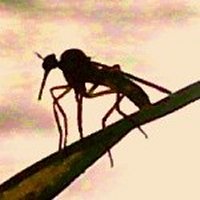Parasites dominate food web links
24januari2007
Parasitism is the most common animal lifestyle, yet food webs rarely include parasites.
The few earlier studies have indicated that including parasites leads to obvious increases in species richness, number of links, and food chain length.
The few earlier studies have indicated that including parasites leads to obvious increases in species richness, number of links, and food chain length.

A less obvious result was that adding parasites slightly reduced connectance, a key metric considered to affect food web stability. However, reported reductions in connectance after the addition of parasites resulted from an inappropriate calculation. Two alternative corrective approaches applied to four published studies yield an opposite result: parasites increase connectance, sometimes dramatically. In addition, we find that parasites can greatly affect other food web statistics, such as nestedness (asymmetry of interactions), chain length, and linkage density. Furthermore, whereas most food webs find that top trophic levels are least vulnerable to natural enemies, the inclusion of parasites revealed that mid-trophic levels, not low trophic levels, suffered the highest vulnerability to natural enemies. These results show that food webs are very incomplete without parasites. Most notably, recognition of parasite links may have important consequences for ecosystem stability because they can increase connectance and nestedness.